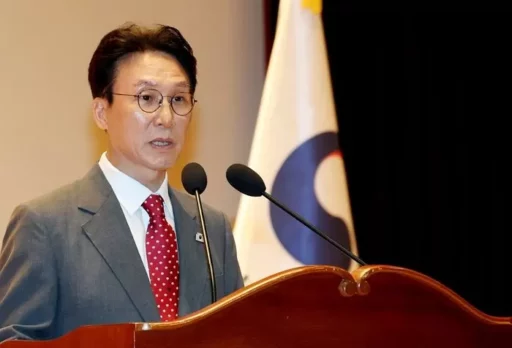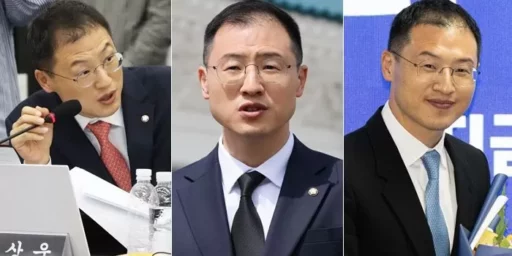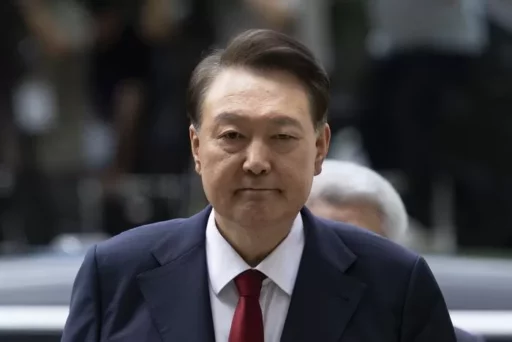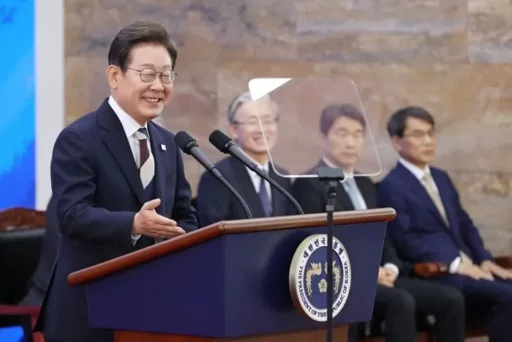"Politicians' Signals Conveyed Through Ties: What Kind of Tie is Needed Right Now…"
The ties worn by politicians serve as a silent medium to express their affiliations, beliefs, and sometimes even their intentions and decisions.
On the 7th, during the inauguration ceremony held at the Government Sejong Complex auditorium, Prime Minister Kim Min-seok explained the significance of the tie he was wearing after finishing his prepared speech.
On that day, Prime Minister Kim stated, "I wore a tie with sheep drawn on it, just like yesterday. Yesterday, it had a blue background, and the sheep symbolize the socially vulnerable." He further added that he doesn't particularly concern himself about the color of the tie, but it is clear that he put significant thought into his 'tie' choice before stepping into his official role as Prime Minister.

Recently, Congressman Kim Sang-wook, who left the People Power Party and joined the Democratic Party, has been actively utilizing such "tie politics."
In December of last year, while still affiliated with the People Power Party, Kim participated in a one-man protest demanding the impeachment of former President Yoon Suk-yeol by untying the red tie he had long been wearing. On May 8, he announced that he would leave the People Power Party and remain independent while wearing a black tie in front of the Gwangju National 5·18 Democratic Cemetery.
Then, a week later, on the 15th, when declaring his support for then-Democratic Party presidential candidate Lee Jae-myung, he wore a red tie to highlight his shift in stance.
To achieve national unity through 'tie politics'…

Subsequently, Congressman Kim appeared at a campaign event for Lee without wearing any tie, a state referred to as 'no tie,' which was interpreted as a way to express his independent status without needing to provide an explanation. As many predicted, Kim's neck was adorned with a blue tie, symbolizing the Democratic Party, as he attended the welcome ceremony for his party membership.
The course of Kim's actions, transitioning from a red tie to a black one, then to 'no tie,' and finally to a blue tie, is cited as a representative case of 'tie politics.'
Prior to this, Kim had used 'no tie' as a means to symbolize his independent status, though some interpret it as a form of 'performative politics.'

Recently, President Yoon requested members of the Cabinet and presidential office staff attending the Cabinet meeting to refrain from wearing ties. This can be seen as an extension of his governance philosophy emphasizing 'practical politics' rather than performative politics.
Moreover, immediately after taking office, President Yoon showcased his commitment to 'national unity' by wearing a tie with various colors instead of the blue tie he had consistently worn.
Meanwhile, former President Yoon wore a red tie on December 3 during an emergency national address announcing martial law, as well as on December 7 and 12, just before the vote on the impeachment motion, and during the public address following the passage of said motion.

Today (9th), he appeared at the Seoul Central District Court for a warrant review regarding abuse of power, also wearing a red tie. On that day, his supporters chanted "President" and cheered for him.
In this way, a single tie chosen by a politician can divide the populace or unite it. It would be nice to see more occurrences of a 'purple' tie in the political arena, symbolizing total camp unification.

Image source: On the 7th, Prime Minister Kim Min-seok attends the inauguration ceremony held at the Government Sejong Complex auditorium and delivers his inaugural address. / News1, changes in the tie of Congressman Kim Sang-wook from the Democratic Party. / News1, on the 8th, President Lee Jae-myung speaks at the Cabinet meeting held at the Yongsan Presidential Office. / News1, former President Yoon Seok-youl appears at the Seoul Central District Court on the 9th for the second pre-arrest interrogation (warrant review) related to the special prosecutor's investigation regarding the state of martial law announced on December 3. / News1, President Lee Jae-myung delivers his inaugural address during the inauguration ceremony held at the National Assembly in Yeouido on the 4th of last month. / News1


![[Breaking News] Osong Disaster Advisory Team Leader Dies After Attempting Extreme Choice and Undergoing Treatment](https://wordkorean.com/wp-content/uploads/2025/07/thumbnail-1012.webp)